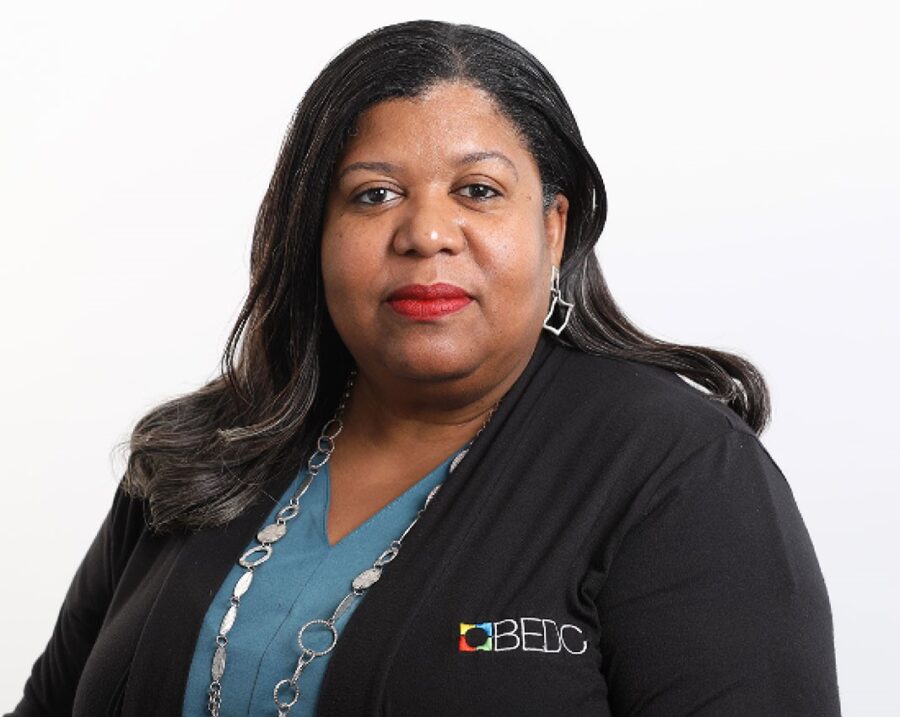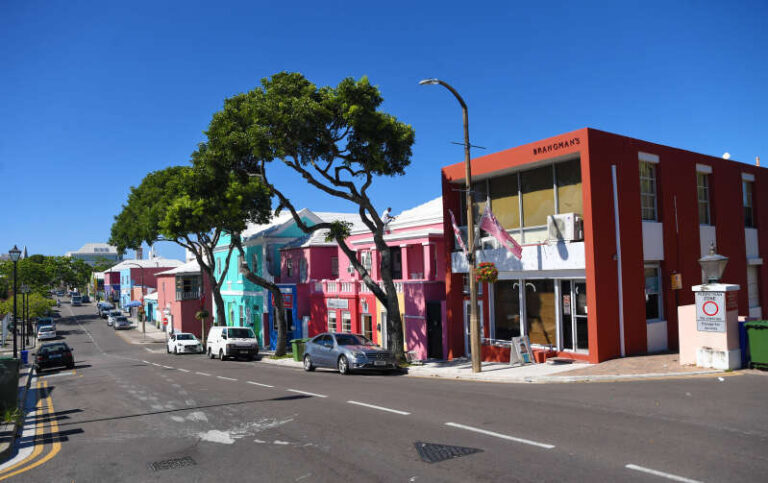(In photo: Court Street, part of the North East Hamilton Economic Empowerment Zone – Photograph by Akil Simmons)
The Uptown Development Authority is quietly working to rejuvenate the parts of Hamilton just outside the commercial hot zone. In doing so, it is tackling some of Bermuda’s major structural issues head-on, including the housing crisis, economic growth and sustainability.
As part of the Bermuda Economic Development Corporation, the UDA brings together investors, planners, architects, developers and other interested parties to highlight the opportunities and create as clear a path as possible to realising them.
The UDA has identified a number of sites ripe for development in the island’s Economic Empowerment Zones, and has worked with architects and designers to create conceptual visions to open potential developers’ eyes to the possibilities.
As its name would suggest, the UDA started out with a focus on Northeast Hamilton, but its remit has expanded to include the other EEZs of Southeast Hamilton, St George’s and Somerset. A branding change to reflect the broader focus will bring a new name, the Urban Development Authority, said Erica Smith, executive director of the BEDC.

In the EEZs, incentives for new businesses and investments exist to stimulate regeneration. The Approved Residential Scheme — which eases some restrictions that apply to the rest of Bermuda and also gives developers opportunity to negotiate breaks on fees and taxes including duties on building materials, payroll tax and land tax — is one such programme.
“I feel the best use of our funding from the Government is to do some of the preparatory work that any developer or investor would need to do to make a decision, such as market research, feasibility studies and working with architects to come up with concepts,” Ms Smith said.
“People can’t necessarily see the potential of a site, so in order to move the bar, we visualise it for them.”
For some potential development sites, the BEDC has created conceptual, high-level designs illustrating what could be done — for example, a six-storey, 50-unit design for a site on the corner of Brunswick and Elliott Streets; another six-storey, 50-unit concept for a site near the eastern end of Church Street; and a proposal for a mixed-use development — 60 residential units, a boutique hotel and a new health clinic — on the publicly owned site of the health clinic on Victoria Street.
Given that building costs and interest rates have surged from pre-pandemic levels, the economics of development have become more challenging. Ms Smith said the Government had allocated $50 million to back financing guarantees to bring down borrowing costs for developers of approved projects in the EEZs.
“Investors will always be concerned about the ability to make a return and the likely profit margin,” Ms Smith said. “To help provide data around those questions, we have carried out a survey on housing demand, to determine what kind of housing people are looking for, and at what price points.”
While most of the residential projects envisaged would not be considered “affordable” housing, their construction could help to alleviate the housing crisis, Ms Smith said.
“The more supply we create, the more prices will come down, because when people have more choices, they’re not competing over one property — and it’s this competition that drives rents higher.”
Interest is growing and the BEDC has met with around 15 developers or investors, several of them overseas entities with experience of building residential housing in cities around the world. Units built under the ARS can be owned by foreigners, without restrictions.
City living may be especially attractive to young expatriate workers who relocate from other cities to work in international business. The BEDC is surveying the IB community to see to what extent housing is an issue for their guest workers and what interest they may have in investing in residential developments.
Ms Smith is hopeful that the public will see the first of the proposed projects get under way this year, highlighting the possibilities to other prospective developers.
“If there’s the right mix of support, concessions and streamlining that is bespoke to each development, I think we can make this work,” she added.
- For more information, visit the UDA’s website at www.uda.bm

